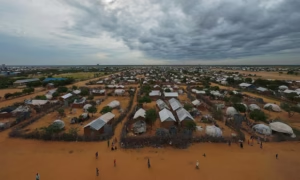The transition of Kakuma Refugee Camp refers to the evolving role, structure, and future of the camp since its establishment in the early 1990s. Located in northwestern Kenya, Kakuma was originally set up to provide temporary shelter for refugees fleeing conflict, but over the decades, it has transformed into a semi-permanent settlement—with ongoing discussions about its long-term future and integration approaches. Here’s a breakdown of its transition:
🏚️ Initial Establishment (1992)
-
Kakuma was established to host the Lost Boys of Sudan, fleeing civil war.
-
Managed by the UNHCR in partnership with the Kenyan government.
-
Designed as a temporary solution for urgent humanitarian needs.
🏘️ Growth and Prolonged Stay
-
Over time, Kakuma’s population surged due to conflicts in:
-
Sudan (later South Sudan)
-
Somalia
-
Ethiopia
-
DR Congo
-
Burundi, Rwanda, and others
-
-
As of recent years, over 200,000 refugees live in Kakuma and the adjacent Kalobeyei Settlement.
-
Despite its original intent, Kakuma became a long-term settlement, with some families living there for over 30 years.

🧭 Shift Toward Self-Reliance (2016–Present)
-
In response to the protracted nature of displacement, Kenya and UNHCR launched the Kalobeyei Integrated Settlement in 2016.
-
Aimed to:
-
Promote refugee self-reliance
-
Encourage economic integration with local Turkana communities
-
Shift from dependency on aid to livelihood development
-
-
Emphasis on education, agriculture, business training, and social services.
🚧 Challenges in Transition
-
Legal barriers: Refugees in Kenya have limited freedom of movement and cannot legally work.
-
Tensions between host communities and refugees over scarce resources (e.g., water, land).
-
Security concerns, especially in a region prone to conflict and poverty.
-
Funding constraints have limited the implementation of development-oriented programs.
🔄 Current & Future Directions
-
Kenya’s new Refugee Act (2021) is a game changer—it recognizes the rights of refugees to work, own property, and access national services.
-
Plans to gradually phase out traditional camps and promote local integration, urban inclusion, or voluntary repatriation.
-
The Kakuma-Kalobeyei Transition Strategy aims to:
-
Transform humanitarian aid into development-oriented support
-
Increase partnerships with private sector, NGOs, and local government
-
Promote durable solutions: integration, resettlement, or return
-



